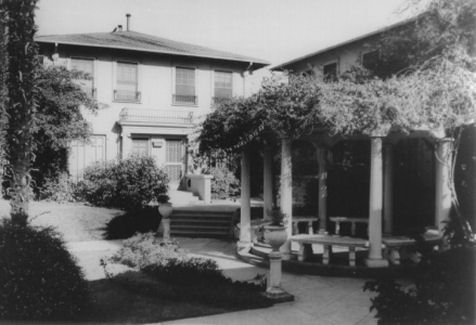
The Murder
It was February 1, 1922 and an unusually cold night for Los Angeles. Despite the fact that this was during prohibition, director William Desmond Taylor and silent film comedienne Mabel Normand enjoyed Orange Blossom Gin cocktails, discussed Nietzsche, Freud and movies. Mabel played comic riffs on the piano. At about 7:45 p.m. he walked her to her car leaving the door open or unlocked to his exclusive Alvarado Street bungalow. As her chauffeur drove off, they blew kisses at one another. With the exception of the murderer, Mabel Normand was the last person to see William Desmond Taylor alive.
Taylor went back into his apartment and at about 8:00 p.m. what was thought to be a car backfire was heard by the neighbors. Faith MacLean went to the window and saw what she at first believed to be a man in a long coat wearing a muffler or with his collar turned up and a plaid cap over his face. He looked at her and casually went back inside as if he'd forgotten something. Later she said this person had an “effeminate walk” and was “funny looking”. More than a decade later during Grand Jury Testimony when pressed by the Sheriff and asked if she could be certain it was a man that she saw, MacLean answered she could not. Another neighbor Hazel Gillon stated that she just saw a dark figure after hearing the car backfire.
All was deadly quiet on Alvarado Street until 7:30 a.m. the next day when Taylor's houseman Henry Peavey arrived at the bungalow and found Taylor, 49, lying dead in the living room. Peavey screamed and ran out into the courtyard and chaos ensued as it was the studio that was called first and not the police. Originally, it was thought that Taylor might have died of natural causes but once he was turned over, it was noticed that he was lying in a pool of blood….shot once in the back.

The Alvarado Street Bungalow
Representatives from Paramount Studios, where Taylor was employed, came out and seized all the letters they could find (with the exception of some Taylor had hidden in his riding boots) and all the bootleg liquor. They even instructed Peavey to clean up the blood and the apartment. The fledgling motion picture industry was in-peril as this was during the time of the rape/murder trial of comedian Fatty Arbuckle (who was finally acquitted after 3 trials, yet his career was ruined), There were also the drug addictions of actors Wallace Reid and Jack Pickford (Mary's brother) and the mysterious death by poison of Pickford's wife actress Olive Thomas. Women's Clubs and religious groups were up in arms against the film industry and were threatening to boycott films. By the time the Los Angeles Police Department detectives arrived the Taylor crime scene was severely compromised.
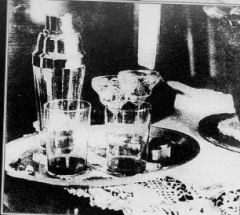
Orange Blossom Gin Cocktail Tray - photo taken after the murder
Taylor in an unidentified film
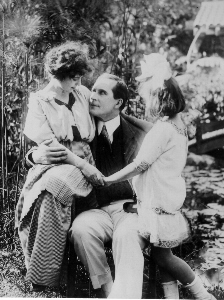 William Desmond Taylor was born William Cunningham Deane-Tanner in Carlow, Ireland on April 26, 1872. He left home at the age of 18 after a falling-out with his father. Taylor immigrated to the United States working as an engineer, gold miner in Alaska, antique dealer and finally an actor in New York. In 1901 he married Ethel May Harrison and a daughter Ethel Daisy Deane-Tanner was born in 1903. Not able to support his family as an actor, this was the period when Taylor worked as an antique dealer in a business financed by his father-in-law. In 1908, he went to lunch and never returned walking out of his wife and daughter's lives without a word.
William Desmond Taylor was born William Cunningham Deane-Tanner in Carlow, Ireland on April 26, 1872. He left home at the age of 18 after a falling-out with his father. Taylor immigrated to the United States working as an engineer, gold miner in Alaska, antique dealer and finally an actor in New York. In 1901 he married Ethel May Harrison and a daughter Ethel Daisy Deane-Tanner was born in 1903. Not able to support his family as an actor, this was the period when Taylor worked as an antique dealer in a business financed by his father-in-law. In 1908, he went to lunch and never returned walking out of his wife and daughter's lives without a word.
In 1912 he arrived in California and began his career as a silent film actor and later a director. He left Hollywood briefly to serve in the British Army during World War I and returned to his career as a Director. His most famous films were based on literary works such as Tom Sawyer (1917), Anne of Green Gables (1919) and Huckleberry Finn (1920).
William Desmond Taylor had a younger brother Denis Deane-Tanner who followed in his brother's footsteps in the antique business and also is said of have come to Hollywood and worked for his brother in an unofficial capacity. Some say that Deane-Tanner played the blacksmith in one of Taylor 's most popular films as an actor Captain Alvarez (1914).
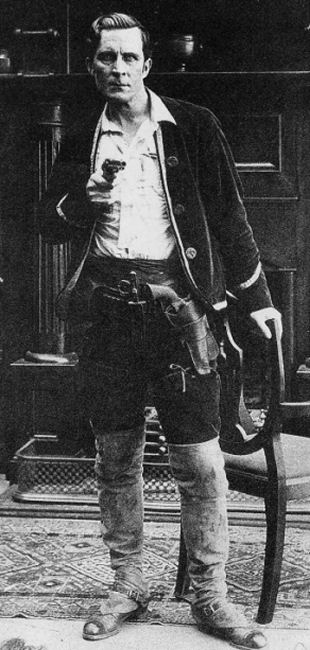
William Desmond Taylor in Captain Alvarez (1914)
The younger brother also followed his brother's lead in deserting his wife Ada and two daughters in 1912. After a visit from his brother's wife, Taylor paid Ada fifty dollars a month as they were destitute. Taylor's own wife Ethel, who eventually obtained a divorce and remarried, saw Taylor in the same film at a movie theater. Ethel told her daughter Daisy that the handsome actor was her father. Daisy then began a correspondence with her father and later visited with him. Amazingly, there was no evidence of hard feelings from Taylor's ex-wife or daughter considering the fact that he had deserted them.
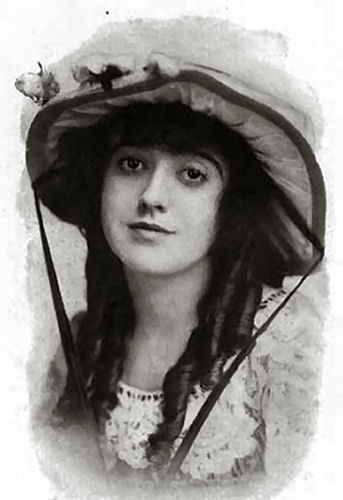
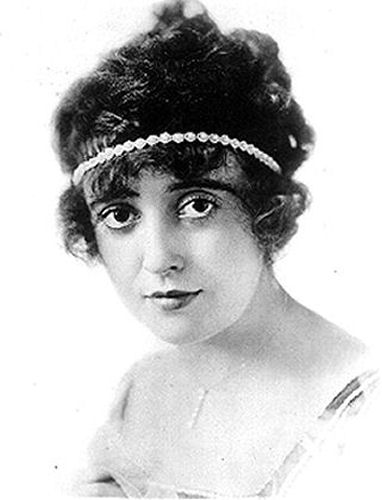
Mabel Normand - The Last Known Person to See Taylor Alive
Mabel Normand, the lovely doe-eyed, brunette actress, was never a serious suspect in the Taylor case, although she was very intent on getting letters back that she had written Taylor. She told officials that she had returned to the house to get the letters saying, “Not that they meant anything to any one but us, but I feared that they might fall into other hands and be misconstrued."
While Mabel Normand may not have pulled the trigger, there is a theory that Taylor's death might have been a result of his trying to help Normand kick her addictions to cocaine and opium. Taylor arranged a stay for Normand at a facility….which must have been one of the first cases of a celebrated film actor going into rehab. So intent was Taylor on keeping drug pushers away from the studios and actors including Normand, that he headed a commission against drugs of which he was Chairman of the Board. Normand alone is said to have spent about $2,000 a month (and this was the 1920s) on drugs. Taylor definitely tampered with the drug dealers' business which was and still would be a very dangerous thing to do. In Robert Giroux's book Deed of Death (1990), he theorizes that a professional hit-man killed Taylor because of his “take charge” opposition against drug dealers.
Her body in a weakened state from past abuses of drugs and alcohol, Normand, by all accounts a warm and generous friend to many including William Desmond Taylor, died of tuberculosis in 1930. It's been said that one of her last statements was “I wonder who killed poor Bill Taylor?”
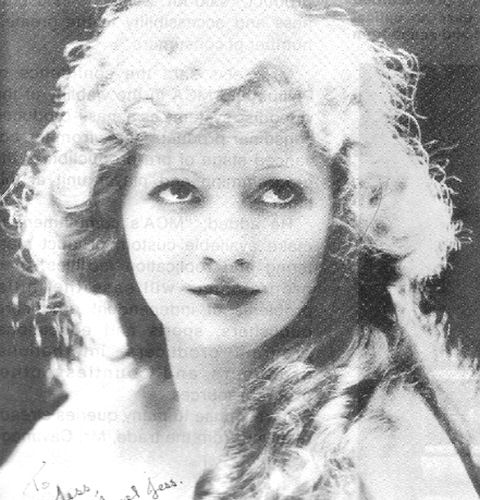
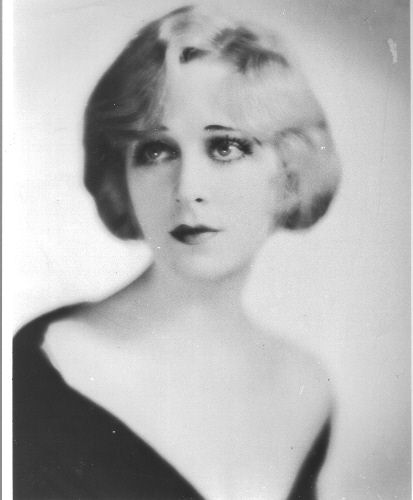
Mary Miles Minter, the golden-haired actress with astonishingly beautiful blue eyes, adored William Desmond Taylor. Just 20 years old at the time of the murder, she had written him letters professing her undying love. Some of these letters were made public after the murder but they were written in a schoolgirl crush fashion and were hardly lurid. Of course, these were only the letters made public. Who knows what letters were taken from the crime scene by the studio before the police arrived. Even decades later she would refer to Taylor as “my mate” and claim they were engaged which was not true. Handkerchiefs embroidered with the initials MMM and a pink nightgown that was said to hers were found at Taylor's bungalow. Actually, the nightgown did not have any identification on it. At one point, Minter issued a challenge that she would give $1,000 to anyone who could produce this nightgown with her initials. Given her strong feelings for Taylor, in a way she probably wished that it had existed.
Minter had visited Taylor on more than one occasion slipping out of the house late at night after her mother Charlotte Shelby (who kept a very close watch of her), grandmother Julia and sister Margaret were asleep. She threw herself at Taylor while he reportedly tried to let her down gently explaining that he was old enough to be her father. On the day of the murder a friend asked Taylor how Minter was, he answered wearily, "She's all tonsillitis and temperament."
Ed C. King, a special investigator with the Los Angeles District Attorney's office, stated in an article for True Detective magazine in 1930 that Taylor was troubled by Minter's unyielding infatuation. King interviewed Arthur Hoyt, Taylor's friend, with whom he worked out with at the L.A. Athletic Club in connection with the case. An excerpt follows:
William Desmond Taylor
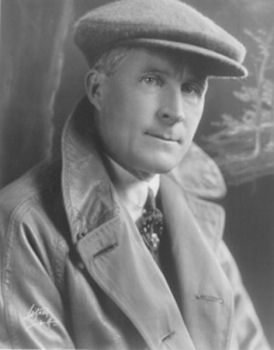 "Taylor swore Hoyt to secrecy, saying that if he would promise not to breathe it to a living soul, he would tell him something that was causing him a great deal of worry. Mr. Taylor then told Mr. Hoyt that the dearest, sweetest little girl in the world was in love with him, and that he was old enough to be her father. This little girl was madly in love with him--had been to his apartment the night before, coming at nearly 3:00 o'clock in the morning. She had insisted on remaining. He had insisted on her going home, whereupon this little girl had cried and threatened that if he tried to put her out, she would scream and cause a scene.
"Taylor swore Hoyt to secrecy, saying that if he would promise not to breathe it to a living soul, he would tell him something that was causing him a great deal of worry. Mr. Taylor then told Mr. Hoyt that the dearest, sweetest little girl in the world was in love with him, and that he was old enough to be her father. This little girl was madly in love with him--had been to his apartment the night before, coming at nearly 3:00 o'clock in the morning. She had insisted on remaining. He had insisted on her going home, whereupon this little girl had cried and threatened that if he tried to put her out, she would scream and cause a scene.
This, of course, Mr. Taylor wanted to avoid, as he had many friends in the neighborhood. He finally persuaded her to leave, driving her to her home. Mr. Taylor stated to his friend Hoyt that this little girl had become so infatuated with him that it was really becoming serious. He was worried and didn't know what to do about it.
She stated that she had not seen Mr. Taylor for a long time, the last time being on the streets of Los Angeles. Mr. Taylor was in his own car and she in hers. They merely waved to each other. This statement was not true. We were able to prove that she had been in his apartment many times, and had actually been there the night of the murder.”
Three long blonde hairs were found on Taylor's jacket and were determined by the police to be those of Mary Miles Minter by matching them with hairs left in her brush at the studio Taylor was meticulous about his clothes and had his jacket brushed every day. There are two versions of Taylor's seeing Minter while driving the day of the murder. One that they passed and waved while driving, and another that they stopped their cars and greeted each other. If it was the latter scenario, then Minter could have hugged Taylor and that would explain the hairs on his jacket.
Charles Higham, in his book Murder in Hollywood: Solving A Silent Screen Mystery (2004), theorizes that the backfire heard by the neighbors at Alvarado Court was just that and that the person seen leaving Taylor's bungalow was a visitor that Taylor got rid of quickly as he had planned on working on his taxes that evening. Higham believes that Mary Miles Minter visited Taylor late at night. She threw herself at him once again…this time threatening to shoot him or herself. He embraced her to calm her down and the gun accidentally went off.
The bullet hole in Taylor's jacket and vest were not aligned. The powder burns indicated that Taylor was shot at close range with his left arm raised as if in an embrace. The person who shot Taylor had to be just a little over five feet tall (which describes every female suspect in this case) or would have had to crouch on the ground and shoot Taylor at an angle.
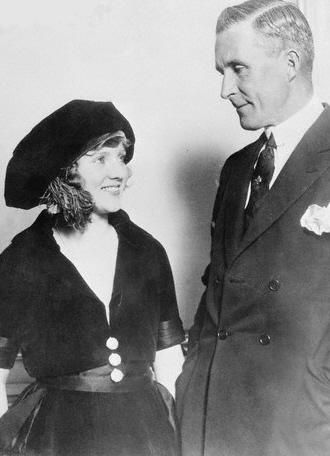
Mary Miles Minter with William Desmond Taylor
There had been an incident in 1920 when Minter had a tantrum while locked in her room with her mother Charlotte Shelby's gun and shots were fired. Minter played “dead” when the family came in she jumped up and laughed. Higham believes she was using the gun to get her way with Taylor just as she tried to do with her family a couple of years before. In the rafters of the home where the Shelby family lived at the time of the “fake suicide” incident was found an unfired soft-nosed lead bullet which “was the same type and weight as the fatal bullet, which was extracted from Taylor's body,” according to Detective Lt. Sanderson in 1937 Grand Jury testimony.
Thomas Lee Woolwine - District Attorney
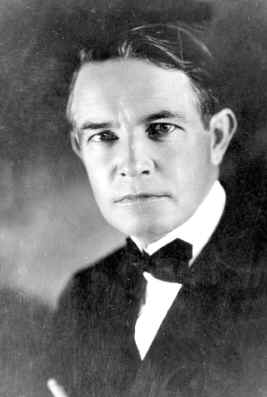
It's said that the reason that Minter or Shelby were never prosecuted at the time of the murder was that Shelby was a close friend of District Attorney Thomas Lee Woolwine. It's alleged that Shelby may have paid off not only Woolwine (accused of bribery in 1915) but successive District Attorneys Asa Keyes (later convicted of bribery in another case) and possibly Buron Fitts (indicted in 1934 for bribery and perjury in another case). In the Shelby/Minter family accounts there was $750,000.00 never declared to the IRS. Transfers beginning in 1922 were made to negotiable bonds and stock certificates with no written trail as detailed in 1931 litigation between Shelby and her accountant Les Henry. Henry claimed the money went for police and press protection. Henry was convicted of improper financial transactions but not of stealing the money. In addition, Woolwine had benefited from contributions from the studios during his campaign (and some say after) and wished to protect the studio at all costs. According to Higham's book, Woolwine didn't believe women on a jury would ever find angel-faced Mary Miles Minter or any other woman guilty of murder let alone sentence her to death. Woolwine was worried about his political future if he lost the conviction. More than one police detective stated that every time they got close to solving the case they were either told to "lay off" or "you're going in the wrong direction."
The one big hole in Higham's theory is that no one heard a gun shot late in the night. The gun shot was shortly before 8 p.m. If Minter did commit the murder, she had to have been hiding in the Taylor bungalow the entire time of Mabel Normand's visit or slipped in while the door was unlocked/open and Taylor had walked Normand to her car.
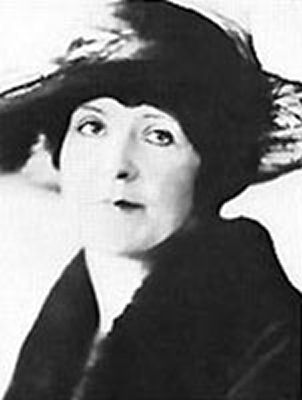 In Sidney D. Kirkpatrick's book Cast of Killers (1986), largely based on research and interviews conducted by Director King Vidor who was fascinated with the Taylor case, it is theorized that Charlotte Shelby, mother of Mary Miles Minter, killed William Desmond Taylor. The theory is that Shelby dressed as a man slipped into Taylor's bungalow, found Mary there and shot Taylor.
In Sidney D. Kirkpatrick's book Cast of Killers (1986), largely based on research and interviews conducted by Director King Vidor who was fascinated with the Taylor case, it is theorized that Charlotte Shelby, mother of Mary Miles Minter, killed William Desmond Taylor. The theory is that Shelby dressed as a man slipped into Taylor's bungalow, found Mary there and shot Taylor.
To say that Charlotte Shelby was possessive of her daughter Mary Miles Minter would be an understatement. In the classic tale of a stage mother, Shelby had wanted to go on the stage herself but lacked the talent to be a success. Instead, she lived vicariously through her daughter who began acting as a child. At all costs, Shelby wanted to protect her investment.
When Minter was still a teenager she became involved with director James Kirkwood and reportedly became pregnant. Shelby paid for the abortion and is said to have threatened Kirkwood with the .38 revolver. During the making of A Cumberland Romance (1920), Shelby charged into Mary's dressing room with the Smith and Wesson Revolver catching actor Monte Blue and her daughter in a passionate embrace. Blue ran out of the room and Shelby took Mary home. Reportedly, later on Shelby is said to have burst into Taylor's office and screamed “If I ever catch you hanging around Mary again, I'll blow your goddamned brains out”. Just about any man who showed an interest in Mary ,or that Mary herself had a crush on, was a target for Shelby's wrath.
And last but not least, in 1920 Charlotte Shelby showed up at Taylor's Bungalow late one night with her 1912 .38 Smith & Wesson blue steel revolver tucked in the long sleeve of her gown demanding to know whether Mary was there (according to testimony of Chauncey Eaton her chauffeur). Fortunately for Taylor, at least in 1920, Minter was not there.
It wasn't until 1937 that Shelby was questioned in the Taylor case. This was a result of a civil lawsuit between Shelby and her other daughter Margaret Filmore who testified: “I protected her (Charlotte) against the Taylor murder case.” This testimony spurred on the Grand Jury inquiry where Filmore stated that Shelby was not home the night of the murder and that she was afraid Mary would run off with Taylor. Strangely enough, Shelby insisted on the Grand Jury inquiry to clear her name after her daughter Margaret's accusation.
Shelby's non-family member alibi for the night of the murder was actor Carl Stockdale who it has been alleged in Higham's book accepted a lifetime income for saying that he was with Shelby between 7:30 p.m. and 9:30 p.m. Charlotte Shelby paid Carl Stockdale $200.00 a month for life....why?
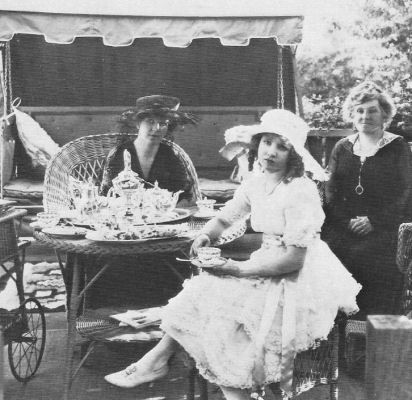
The Formidable Shelby/Miles Women - Mary Miles Minter (center), Charlotte Shelby (left) and grandmother Julia Miles (right)
Shelby's mother and Minter's grandmother, Julia Miles, is said to have taken the infamous revolver and thrown it in a bayou near her plantation in Louisiana in August 1922. In Cast of Killers, an interview between Detective Lt. Sanderson and director King Vidor reveals that the gun was later retrieved from the bayou. In 1973 former District Attorney Buron Fitts killed himself with an identical .38 Smith & Wesson Revolver which hasn't been seen since.
In 1926 District Attorney Asa Keyes questioned Mary Miles Minter asking if she ever heard her mother threaten to kill William Desmond Taylor. While Minter said she did not believe her mother was the murderer, she did answer, “Not definitely. She may have said, “I'll kill him….I'll kill him….she was like that. She was always going to kill somebody.”
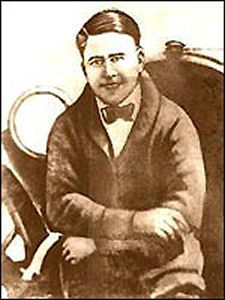
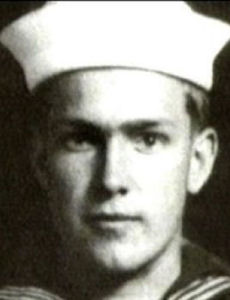
Artists rendering of Sands and an early Navy Photo
William Desmond Taylor had the misfortune of hiring sociopath Edward Sands a.k.a. Edward Snyder as his houseman in 1920. Sands pretended to be British, a cockney, actually he was born in Ohio.
In the days before employee background checks, how was Taylor to know that Sands had deserted from the Navy and re-enlisted using different names? Sands was charged with fraud and embezzlement in 1915. He was dishonorably discharged after one year of hard labor in 1916. Later he enlisted in U.S. Naval Reserve in 1917 and stole an automobile and wrecked it. He got off saying he'd pay for the damages and then deserted saying they could come after him if they wanted the money. In 1919 he enlisted in the Navy again and was assigned to the finance office of all places. He forged a check payable to himself for $481.53 and then forged his own discharge papers!
The first year of Sands' employment with Taylor was relatively smooth. He, in fact, seemed to adore his employer even offering himself as a slave for life. However, in 1921 when Taylor took a trip to Europe, Sands forged $5,000 in checks and stole and wrecked Taylor's car. Sands also stole jewelry and Taylor's Russian gold-tipped cigarettes. A few months later, Taylor came home and found the distinctive cigarettes crushed and smoked on the porch indicating that Sands had come back to the bungalow. Sands had also mailed the pawn tickets for the jewelry back to Taylor under his real name William C. Deane-Tanner with a note: "So sorry to inconvenience you even temporarily. Also observe the lesson of the forced sale of assets. A Merry Xmas and a happy and prosperous New Year. Alias Jimmy V." Handwriting analysis confirmed the note was written by Sands. This also shows that Sands knew Taylor's true identity.
In a Los Angeles Times article from 1922, Taylor's friend Julia Crawford Ivers said: "There never was a more devoted man serving another than this man Sands during the first year and a half of his service for Mr. Taylor. Mr. Taylor trusted him with everything. Sands read everything he could find. He used to study into the late hours of the night and when Mr. Taylor told me of the various actions attributed to Sands, we all decided the man must have become deranged..."
Before the murder, Taylor had been troubled with phone calls. Someone had been calling him late at night and would hang up. It seemed as if they were checking to see if he was home. The night before Taylor's murder he had shown his tax preparer Marjorie Berger, $5,000.00 in cash that he kept. The $5,000.00 was not found after Taylor's death. Yet on his body was $78.00 and his diamond ring. No other valuables were taken.
It would seem that Sands was the murderer, with the exception of the fact that he signed in for work at a lumber yard in Oakland, California on the day of the murder. The fact that Taylor didn't do more to find Sands, indicates that Sands may have been blackmailing him. Also, Taylor's bank accounts were surprisingly low considering his salary, at the time of his death.
It has been reported that Sands was found dead from a suicide in Connecticut, and that District Attorney Woolwine knew this and kept it a secret from the press to throw suspicion away from suspects in the movie industry. Woolwine continued a man-hunt for a dead man.
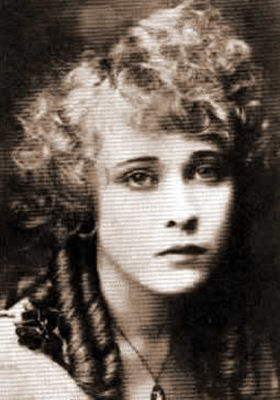 Having been interested in this case for decades, this author thought no new evidence would ever come to light.
Having been interested in this case for decades, this author thought no new evidence would ever come to light.
Bruce Long, the foremost Taylor historian, who has written the book William Desmond Taylor: A Dossier (1991) and runs the excellent Taylorology website received an email in 1996 from Ray Long (no relation). Long had been a neighbor of a reclusive little old woman who didn't leave the house often and had her groceries delivered. This woman, who he knew as Pat Lewis, was a widow and a friend of his mother's. One day in 1964 the poor woman, who had converted to Roman Catholicism, was having a heart attack and asked for a Priest to confess. No Priest being available, she began to make her deathbed confession anyway saying that she had once been a silent film actress and that she shot and killed a man named William Desmond Taylor. At the time, Long didn't know who William Desmond Taylor was. Long's mother revealed that one evening, she and Pat Lewis were watching Ralph Story's Los Angeles on television. When a piece on the Taylor murder aired, Lewis became hysterical and blurted out that she'd killed him and thought it was long forgotten. “But mother never once said a word to any of us about this incident”, wrote Ray Long.
Margaret Gibson, the exquisitely beautiful actress, and Pat Lewis were one in the same person. At the time she was a silent film actress, Gibson had trouble of her own having been arrested for vagrancy connected with opium dealing in 1917. She was in what was then called a “disorderly house.”… translation … a house of prostitution. At the time she said she was picking up “local color” for a movie role. Gibson was acquitted. After this incident, she changed her name to Patricia Palmer. In November 1923, she was arrested again on federal felony charges involving a blackmail and extortion ring. The charges were dropped by the District Attorney.
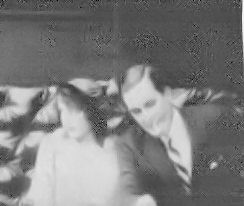
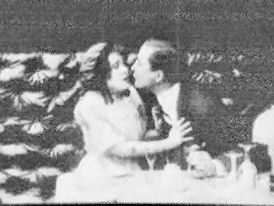
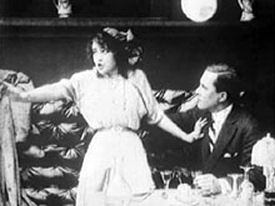
Margaret Gibson & William Desmond Taylor in The Kiss (1914)
Margaret Gibson did indeed work with William Desmond Taylor before World War I. They worked together in theater in Denver in 1910 and then in Hollywood films. Other than the fact that they worked together as actors years before the murder, there is no known connection between them. However, Gibson, as Patricia Palmer, was working at Paramount in 1921. Undoubtedly, she would have seen Taylor on the lot. Did Gibson have some kind of romantic obsession with Taylor as did Mary Miles Minter? Was Gibson somehow involved with a group of people in blackmailing Taylor? Given her arrests concerning blackmail and drugs, this could be a possibility. Despite women coming and going through Taylor's bungalow as if through a revolving-door…there is some speculation that he might have been a bisexual. If that fact came out, Taylor's career would have been ruined.
Could the mysterious man who was seen leaving Taylor's bungalow the night of the murder have been Denis Deane-Tanner, his younger brother? The trail on Denis Deane-Tanner ends in 1930.
During his lifetime, William Desmond Taylor was described as an individual who enjoyed his solitude, good books and most of all his work. His intelligence, sophistication and gentlemanly manners made him a sought after guest at gatherings where Hollywood personalities were not usually invited. Taylor was a three-term President of the Motion Picture Directors Association and tried valiantly to keep drugs out of the film industry. Unfortunately, he employed unsavory characters and became involved with emotionally unbalanced women. One of these associations, his mysterious past or his fight against drug dealers led to his murder
For all the notoriety of his death, the gravestone of William Desmond Taylor reads very simply:
William C. Deane-Tanner
Beloved Father of Ethel D. Deane-Tanner
Died February 1, 1922
A loving tribute from the daughter he once deserted and then reunited with.
Copyright © Dina Di Mambro 2007-2015. This article may not be reprinted without permission.
Buy True Hollywood Noir by Dina Di Mambro today!
A tantalizing mixture of classic Hollywood nostalgia and true crime, True Hollywood Noir: Filmland Mysteries and Murders , featuring 100 rare photographs, is suspenseful, entertaining, and eminently readable. While viewers were captivated by the drama playing out on the silver screen, the lives of the stars of these film noir classics were often far more exciting. The film plots of these stylish black and white masterpieces pale in comparison to what was going on behind the scenes. Uncover the true stories in a dozen different chapters featuring William Desmond Taylor, Thomas Ince, Jean Harlow, Thelma Todd, Joan Bennett, Lana Turner, George Reeves, Gig Young, Bob Crane, Natalie Wood, Robert Blake, and Mickey Cohen. Included in the cast of characters of the Thomas Ince chapter are William Randolph Hearst, Marion Davies, and Charlie Chaplin. And in the Mickey Cohen chapter, find never before told stories about Ben "Bugsy" Siegel, Virginia Hill, and a host of notorious underworld figures
___________________________________________________________________________________________________________________
No one could write about William Desmond Taylor without referring to foremost William Desmond Taylor expert Bruce Long's excellent Taylorology website as a primary source. Visit this site if you are interested in exploring the William Desmond Taylor murder further than the summaries on this page. The wealth of material on the Taylorology site as well as Bruce Long's book Wiiliam Desmond Taylor: A Dossier (highly recommended) is extremely impressive. Also, the other books quoted from on this webpage are available from Amazon below and are all great reads.
William Desmond Taylor Links
You Tube Link to The Kiss (1914) William Desmond Taylor & Margaret Gibson
You Tube Link to 16 Silent Film Celebrities & The William Desmond Case
William Cahill Discusses the William Desmond Taylor Case
You Tube Link to 12 Silent Film Celebrrities & the William Desmond Taylor Case
You Tube Link to Mary Miles Minter Audio Interviews
Silent Film Related Links
Memoirs of the Magnificent Moviola
Collection of Silent Film Sites
Further Reading - Crimes of the Century, Hollywood Crimes and more
Dina Di Mambro's Classic Hollywood Biographies
Classic Film Actress Vintage Movie Magazine Gallery - 1920s thru 1950s Covers
|
BOOK - TRUE HOLLYWOOD NOIR - Uncover true stories of Hollywood mysteries, scandals & murders in a dozen different chapters featuring William Desmond Taylor, Thomas Ince, Jean Harlow, Thelma Todd, Joan Bennett, Lana Turner, George Reeves, Gig Young, Bob Crane, Natalie Wood, Robert Blake, and Mickey Cohen. Included in the cast of characters of the Thomas Ince chapter are William Randolph Hearst, Marion Davies, and Charlie Chaplin. And in the Mickey Cohen chapter, find never before told stories about Ben "Bugsy" Siegel, Virginia Hill, and a host of notorious underworld figures |
Author Dina Di Mambro
has written extensively about classic movie stars of the golden age of Hollywood from the time she was a teenager. Her book Television Series Regulars of the Fifties and Sixties In Interview (McFarland Publishing, written under the name Dina-Marie Kulzer) consists of 22 in-depth interviews with stars of classic TV series and was originally published in 1992. In addition, she has worked as a research consultant and provided materials for biography specials about Carole Lombard for the A & E Network and E! Entertainment Television. Any questions or comments? Please contact